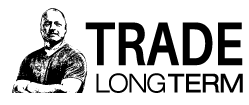How Profits are Generated

Published August 13th, 2021
To someone expecting profit generation to come from complexity, what follows may seem too simplistic.
The more you can understand and explain WHY profits are generated, WHY you have an edge, the more comfortable you will be applying your strategy.
You do not need to understand all the different tools employed by successful investors to make investment decisions – far from it. We can easily dispel the myth that there is some ‘secret’ to success. For example, if we were to select twenty of the most successful fund managers, place them in a room together and ask them to explain how they make investment decisions they will each have different styles, different criteria, different position management processes and different risk management techniques. Yet they are all successful.
If these twenty investors are successful yet all use different tools, then the tools are not the common denominator in the success equation. The tools they use, their valuation techniques, metrics and models, trigger their participation in the market; nothing more.
Profitability comes from something else.
Success in the share market comes from understanding the mathematical principles behind trading.
“There is no such thing as luck. It is all mathematics” – Nico Zographos
Simply put, that means understanding how and why you have an edge.
An edge is not the method of buying and selling to generate a profit. It is not how far a stock is trading below its intrinsic value nor is it related to future growth prospects, predicting the next hot sector or any other financial or qualitative metric.
An edge is the mathematical outcome of the buying and selling process.
All successful investors create a positive edge. Unsuccessful investors have a negative edge.
It’s important to know how to create a positive edge over the longer term. Once you can create that edge, all you need to do is apply it consistently.
Three factors will determine your edge:
- How much you win when you win
- How much you lose when you lose
- How often you win
We can combine 1 and 2 and call the resultant number the win/loss ratio.
George Soros has winning and losing trades. He is a Global Macro investor and he also generates these same statistics. Warren Buffett, arguably the world’s greatest investor, has good trades and bad trades. He too would generate these same three statistics. Keith Campbell, with a 30+ year track record, will too. Any trader or investor of any caliber, regardless of how they operate in the market, will generate these figures.
Let’s consider an example: if Jane makes 10 transactions over a period of time we can calculate these three factors and understand her profitability.
If 5 of her transactions are winning propositions and 5 are losing, you may assume that Jane isn’t much of an investor with a win rate of just 50%. That kind of strike rate within investor universe would be deemed close to failure. But if we knew that each loss Jane sustained was limited to $1000, yet each profit she made averaged $3000, then all of a sudden Jane is a very profitable investor.
Her win/loss ratio is 3:1 and we can calculate her profit by:
(5 x $3000) – (5 x $1000) = $10,000
If Jane can generate 20 transactions a year instead of 10, she becomes twice as profitable albeit still with a success rate of just 50%. This ‘mediocre’ success rate is not so mediocre after all.
As a momentum investor, I cannot know how far a stock will rise. Nobody can know, with any certainty or any consistency, how far a stock will travel, either up or down. However, there are two things that I, as a momentum investor, can do to increase my mathematical edge:
(1) Allow the stock to continue to rise and, like a hitchhiker, get off the trend only when it reverses, and
(2) Control any loss incurred if the stock reverses immediately after the initial entry.
This is how Jane managed the above example. She limited her losses to $1000 yet allowed her profits to grow to an average of $3000, enabling her win/loss ratio to rise above 1:1.
Jane created her positive edge simply by cutting her losing positions yet allowing her winning positions to run. We haven’t discussed why Jane bought those stocks or the tools she used to determine why she should buy them. Those factors or tools simply do not matter. Remember, they are deemed ‘comfort’ items only. Had she not created that mathematical edge in the first place she would be a loser. Period.
The larger that win/loss ratio grows, the higher your profitability will be and the less important the win rate becomes. Unfortunately, the win rate is where most novices, and indeed many experienced market professionals, come unstuck. It’s human nature to think that a high winning percentage of transactions equates to higher profits, yet, as these examples show, nothing could be further from the truth. The issue we have is that our society naturally rewards those who do well. High School students with the best marks become eligible for the better college degrees. A better college degree enables better job prospects and potentially a higher income in the workforce and therefore potential for a higher standard of living.
When it comes to the markets the same is not always true. In fact, pursuing this logic in the market can cause severe frustration and disappointment. An investor who makes ten trades and gets eight correct can mathematically still lose.
If Jack makes 10 transactions over a period of time we can again assess our three factors to understand his profitability.
If 8 of the transactions were winning propositions and 2 were losing, you could assume that Jack was a gun investor with a win rate of 80%. But if we knew that each loss Jack sustained was $5000, yet each profit he made averaged $1000, then all of a sudden Jack is quite the loser even though he has 80% of his trades ‘right’.
His win/loss ratio is 1:5.
(8 x $1000) – (2 x $5000) = -$2,000
Most people would consider Jack a winner and that he should be rewarded. The market, on the other hand, says he’s a loser and has quite rightly removed cash from his pocket. We haven’t discussed how or why Jack bought the stocks he did. It doesn’t matter what tools he used. He allowed his average loss to become so much larger than his average win that he turned his high win rate, and his foray into the stock market, into a losing business proposition.
People like Jack, who pursue a higher winning percentage of trades, are more prone to disappointment and frustration because the search for the high winning strategy in pursuit of higher profits is never ending.
What Jack fails to understand is the basic mathematics behind success and failure. The amount you win when you win and how much you lose when you lose is far more important than how often you win. Jack achieved an 80% win rate by waiting and hoping for any bad positions to come good again. When faced with a relatively small profit he will tend to grab it prematurely to satisfy his need to be right. Unfortunately the longer you play this game the more you learn that some positions will never come good which is why so many people lost so much money during the 2008 crisis.
In 33 years of practical investing and trading I have come to understand that you have two simple choices:
(1) Accept a high win/loss ratio at the expense of a higher winning percentage, or
(2) Pursue a high winning percentage strategy at the expense of a high win/loss ratio.
I accept I cannot predict the future, that I can’t time the market and I also accept that I cannot control the market. However, I can control how much I win when I win and how much I am willing to lose when I lose. In other words, I can control the win/loss ratio, but not the winning percentage.
Over the last 15-years the Premium Portfolio has a backtested win rate of 59.9% with a win/loss ratio of 2.76.
And that’s all I need.
Nick Radge
